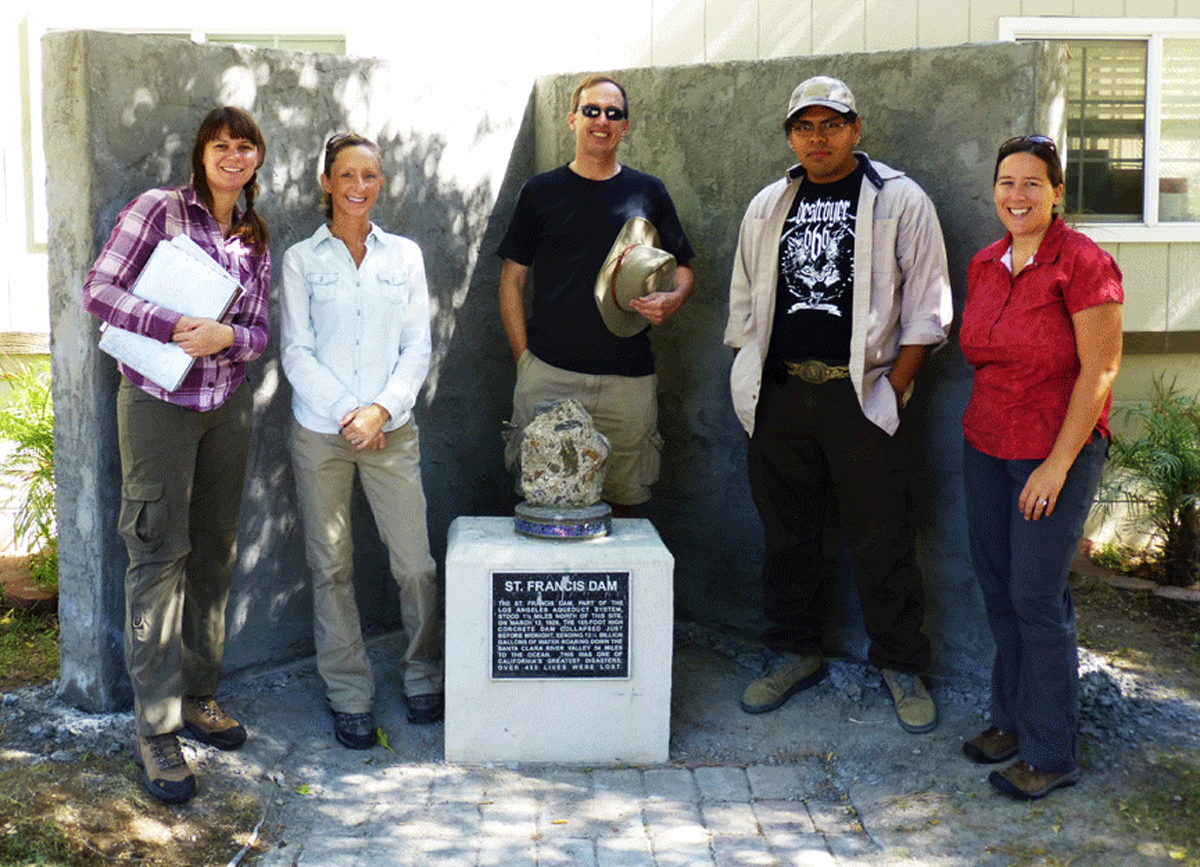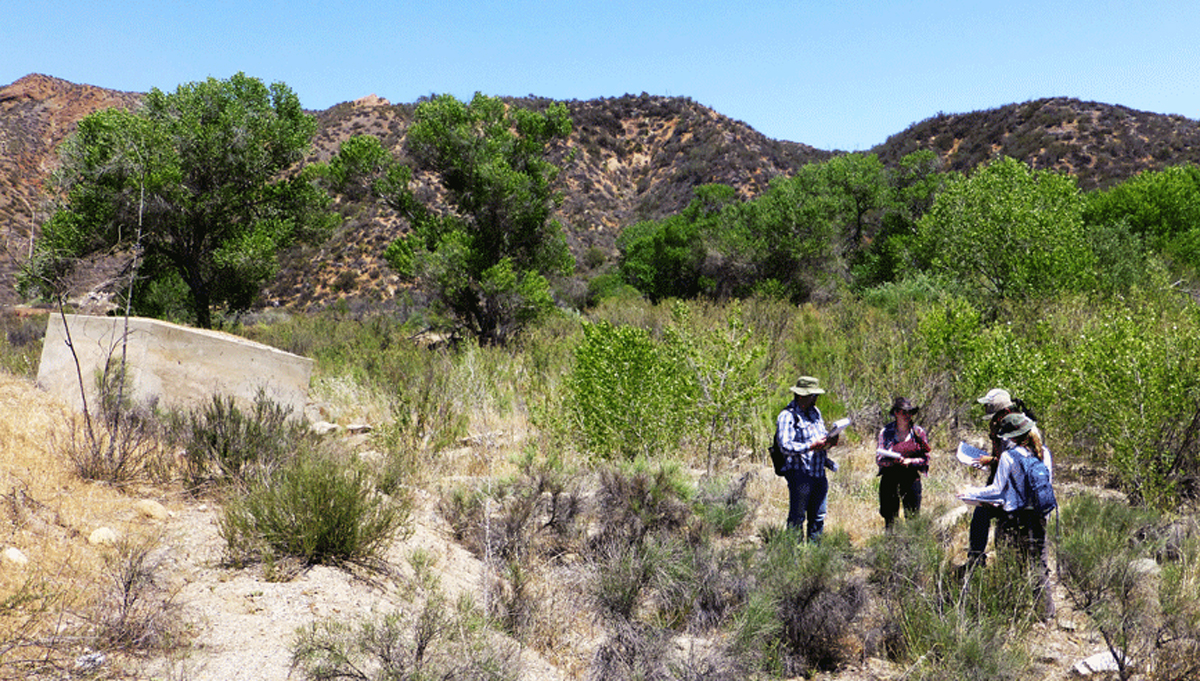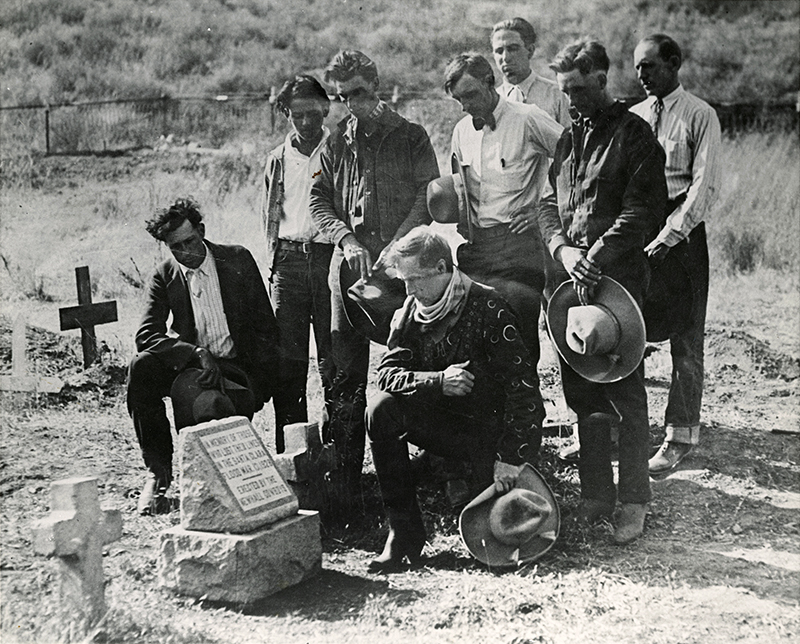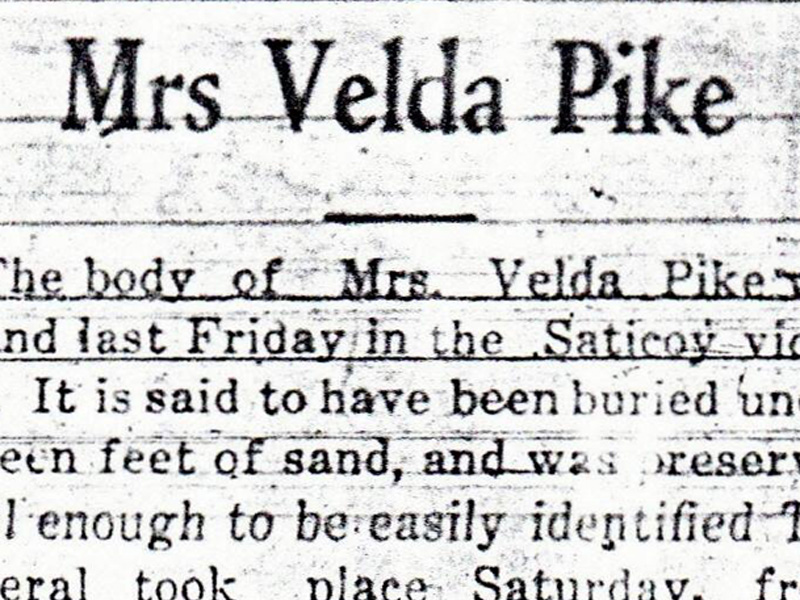|
|
CSUN Prof Hopes to Tell the Human Stories of St. Francis Dam Disaster
California State University, Northridge | Monday, Nov. 4, 2013
|
Shortly before midnight on March 12, 1928, the St. Francis Dam in northern Los Angeles County collapsed, sending a wall of water 120-feet high hurtling west to the ocean, leaving a path of death and destruction in its wake. While much has been written about the dam — the role it played in the completion of the Los Angeles Aqueduct and the mistakes, if any, its engineer William Mulholland may have made in its construction — very little is known about the 476 people who were killed in the flood that followed its collapse. California State University, Northridge anthropology professor James Snead, an archaeologist, hopes to change that on this 100th anniversary of the aqueduct. Snead and a team of CSUN anthropology graduate and undergraduate students have spent more than a year combing through governmental records and surveying sites along the flood's route to learn just who those victims were and to tell their stories. "The St. Francis Dam disaster — within the broader 'water wars' theme that we're all familiar with from the movie 'Chinatown' and that accompanies the story of the construction of the Los Angeles Aqueduct — has been treated in relatively broad historical terms, focusing on engineering, policy and anecdote," Snead said. "Ironically, there has never been a full accounting of the dead; no reckoning of their lives, their possessions or of the full discovery and disposal of their remains. "They were people with families and jobs who had the misfortune of living in the path of a disaster," he said. "There's a huge gap that people clearly don't know, including their family members. It's hard to obtain closure, with so much unknown." Snead and his students are working with a diverse group — from local aficionados and historical societies to rangers in the Los Angeles National Forest — on the "Forgotten Casualties Project." Snead said a key resource has been the Los Angeles Department of Water and Power. The project's team scanned thousands of pages of LADWP claim forms associated with death and loss from the disaster. "These were records that no one had ever looked at before," he said. "The people at LADWP were incredibly helpful. They had 40 boxes of claim forms with information that told a whole lot about the people in the water's path. We got to know about them as individuals, their ethnicities, their economic status."
The team is also surveying a site in San Francisquito Canyon about two miles downstream from the dam itself in the Angeles National Forest. The students are uncovering artifacts — pieces of cars, of equipment from a powerhouse that was destroyed in the flood, iron beds, crockery, etc. — that give insights into the lives of the people who lived and worked in the area. What they have learned so far is that the communities impacted by the dam's collapse were "very, very diverse," Snead said. "There were people from everywhere," he continued. "Descendants of old ranchers, agricultural immigrants and there were work camps in the valley, members of work teams for Southern California Edison who were putting in electrical lines." One thing that surprised Snead and his team was the compensation pattern for the survivors of the disaster. The refugee camps and support systems set up at the time were divided along ethnic lines — one set for Anglos and another for Latinos and other non-Anglos — with disparities that reflected the norms of the time. "When it came to compensation, we expected to find that the Anglo community would be better compensated because of latent discrimination," Snead said. Instead, he said, graduate student Ann Stansell found that oftentimes, members of the Latino community got equal or greater amounts in compensation because they hired attorneys to represent them. "They probably assumed they would be treated unfairly," he said. But when it came to other matters, people were left to the "mercy of the process," Snead said, pointing to one case in which a Latino man was the sole survivor of his family. He believed family members' bodies were amidst the debris on a neighboring farm but that farmer refused to let him search. The man even appealed to the Mexican consulate for help, but he was never given permission to look for the bodies. "When people think of archaeology, they tend to think it's 'Indiana Jones' and people excavating pyramids in faraway, exotic locations," Snead said, noting that October was declared "Archaeology Month" by the California State Parks' Office of Historic Preservation. "True, there are digs in faraway places about ancient people. But archaeology is also learning about people in our more recent history. It's a way to learn about ourselves, who we are, in more complex ways." Snead and his team are continuing their work on the Forgotten Casualties Project and hope to start making presentations about what they've learned at area libraries and historical societies soon.
|
ALSO SEE:
Background: Forgotten Casualties (CSUN 2013)
• Memorialization and Memory • Paper: Oral History (Licon 2014) Story: Victims & Heroes
FILM: Body Recovery, Newhall Morgue
FILM: Nighttime Recovery of Bodies
3-17-1928
Tony Harnischfeger
Lyman & Lillian Curtis
Marjorie & Mazie Curtis (Mult.)
San Francisquito School
Cecilia Small, Schoolteacher
Ruiz Family x7
Pete Rivera
Erratchuo 1928
1928 Mourners
Newhall Cowboys 1928 Marker x2
Newhall Morgue
Gottardi Family
Felda Pike Obituary
Saugus Community Club Members
Oral History: Thelma McCawley Shaw 2010
Oral History: Biz Basolo 2009
|
The site owner makes no assertions as to ownership of any original copyrights to digitized images. However, these images are intended for Personal or Research use only. Any other kind of use, including but not limited to commercial or scholarly publication in any medium or format, public exhibition, or use online or in a web site, may be subject to additional restrictions including but not limited to the copyrights held by parties other than the site owner. USERS ARE SOLELY RESPONSIBLE for determining the existence of such rights and for obtaining any permissions and/or paying associated fees necessary for the proposed use.



















